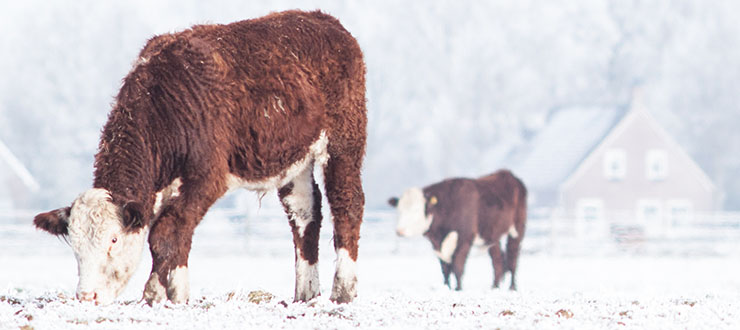
5 Summer Tips for Prime Winter Forage
It’s hard to think about preparing for the scarcity winter when late-summer is so abundant. Fortunately, our forefathers learned long ago the importance of planning ahead for the long, winter months. Taking steps now for a winter forage pasture means your livestock will have supplemental feed all winter long that’s affordable and nutritious. And, hands down the best seed for winter forage is Ragan and Massey’s Prine Tetraploid.
Prine is a non-GMO commercial annual ryegrass variety. This high-yield, cold tolerant, rust- and disease-resistant tetraploid variety is palatable, establishes quickly and produces a lot of forage in a short amount of time. Here are 5 tips to put into action now for prime winter forage.
Prepare an ideal seedbed.
An ideal seedbed for Prine is one that’s not too soft. Ryegrass seeds like a shallow planting, about ¼ to ½ inch in-depth, and if the ground is too soft, the rain will drive the seeds down too deep to germinate. A good test of firmness to walk across the seedbed and if your soles sink, add something over the soil to firm it up. We recommend running a culti-packer over light soils to firm up the bed for soil germination and to also help grazing efforts.
Achieve adequate coverage.
For Prine and other ryegrass varieties, we generally recommend planting 30 pounds per acre. If you’re looking to overseed with a broadcast spreader, you may want to use more than 50 pounds per acre. If you choose to drill the seed, about 25-pounds-per acre should fit the bill.
Determine grazing intensity.
The amount of Prine for your pasture is determined by how much your livestock will need to feed off it during winter. For intense grazing, a higher seeding rate will pay off. But, if you plan to only graze a few animals, use a lower seeding rate as the plants will be taller at harvest and shade each other if the population gets too high.
Use to Overseed a Bermuda grass pasture.
Prine is the perfect option to overseed a Bermuda grass pasture for winter. It not only can help reclaim barren areas due to weeds but spreading Prine in late-summer and early-fall without tilling helps prevent erosion. Plus, late-summer plantings mean there is plenty of time for new forage to establish itself before spring.
Prepare to graze the pasture hard.
If you are overseeding a pasture with Prine, there could be concerns about getting rid of the ryegrass before the Bermuda grass comes in the spring. Simply prepare to graze the pasture hard. Grazed ryegrass can’t compete with warm season Bermuda grass. If your ryegrass is sticking around longer than you’d like, turn more animals onto the pasture for longer time periods.
Vigorous and hardy, Prine easily establishes and produces long-lasting, high-quality forage. You and your livestock won’t be disappointed. Go to Where to Buy to find it near you.